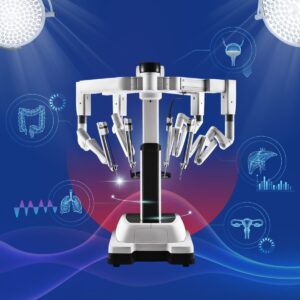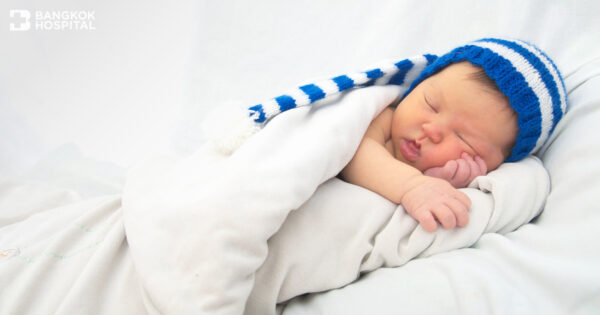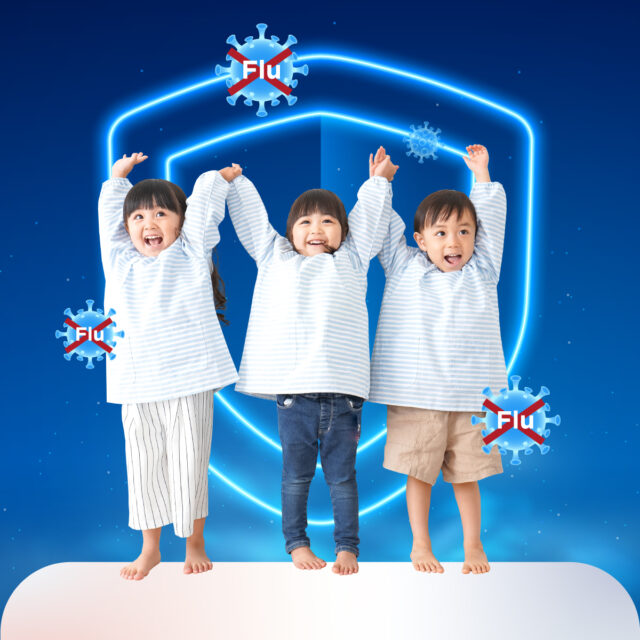Newborn jaundice is a condition where a newborn’s skin and eyes turn yellow because a high level of bilirubin, a yellow pigment produced during normal breakdown of red blood cells. Jaundice is one of the most common conditions in newborns that requires medical attention. Approximately 50% of term babies and up to 80% of preterm babies develop jaundice in the first week of life. Since jaundice in newborns, if left untreated, might lead to serious complications, parents need to know jaundice and its related conditions in order to seek medical assistance as soon as the abnormalities are noticed.
Get to know jaundice in newborns
Jaundice in newborns is a condition where a newborn baby’s skin and eye turn yellow because an excessive amount of bilirubin is produced or because the liver cannot get rid of bilirubin quickly enough. Bilirubin is a brownish-yellow substance that is produced after red blood cells break down. The body excretes bilirubin through the stool and urine. Newborns usually develop jaundice on the 2nd or 3rd day after birth and it is normally noticed by the obstetricians. Apart from the baby’s appearance, it might be necessary to measure the level of bilirubin in the baby’s blood. The level of detected bilirubin determines severity of jaundice and the course of treatment.
Causes of jaundice
There are 2 major causes of newborn jaundice:
1. Physiological jaundice:
Excess bilirubin is the main cause of physiological jaundice. Newborns usually produce more bilirubin than adults do because of greater production and faster breakdown of red blood cells in the first days of life. Normally, the liver filters bilirubin from the bloodstream and releases it into the intestinal tract for excretion. A newborn’s liver is immature and it cannot remove bilirubin quickly enough, causing an excess of bilirubin in the bloodstream. Jaundice due to these normal newborn conditions typically disappears within 1-2 weeks after birth.
2. Pathological jaundice:
Some underlying disorders may cause infant jaundice. Diseases or conditions that can cause pathological jaundice include:
- An incompatibility between the mother’s blood and the baby’s blood e.g. mother has O blood type while baby has A or B blood type or mother has Rh negative type and baby has Rh positive type.
- An abnormality of baby’s red blood cells that causes them to break down rapidly e.g. a genetic disorder “G6PD deficiency”.
- Excessive amount of red blood cells in infants due to diabetic mothers.
- Breastfeeding jaundice most often occurs in the first week of life when breastfeeding is being established. Newborns may not receive optimal milk intake which leads to elevated bilirubin levels due to increased reabsorption of bilirubin in the intestines. Inadequate milk intake might involve wrong position of breastfeeding or the abnormalities of babies e.g. preterm birth, low birth weight and babies with tongue-tie which is linked to breastfeeding difficulties.
- Other causes e.g. liver malfunction, bile duct stricture (yellowish skin presented with pale feces), thyroid disorders and sepsis.
Severity and complications of newborn jaundice
High levels of bilirubin that cause severe jaundice can result in serious complications if not treated. Bilirubin is toxic to cells of the brain. If a baby develops severe jaundice, there is a risk of bilirubin passing into the brain, causing bilirubin-induced brain dysfunction which is called “kernicterus”. Initial symptoms of kernicterus may include lethargy (sleepiness), involuntary and uncontrolled movements as well as poor feeding. If it progresses, worsening symptoms are irritability, a high-pitched cry, limpness or stiffness of the whole body with muscle spasms or reduced muscle tone and backward arching of the neck and body. In severe kernicterus cases, a blood transfusion is immediately required to lower the amount of free bilirubin in the blood and reduce brain damages that cause intellectual disabilities. If left untreated promptly, its severity dramatically increases with severe muscle spasms, poor feeding, convulsion, respiratory failure, leading to coma and death.
Treatments of jaundice in newborns
To lower the level of bilirubin in the baby’s blood, treatments include:
- Light therapy (phototherapy). Baby may be placed under a special lamp that emits light in the blue-green spectrum with particular wavelength. The light changes the structure of bilirubin molecules in such a way that they can be excreted in the urine and stool. During treatment, baby wears only a diaper and protective eye patches. Bilirubin level will be closely monitored until it falls into normal range. However, phototherapy might notably cause increased insensible water loss, leading to dehydration and reduced body weight.
- Blood transfusion. When severe jaundice does not respond to other treatment and bilirubin level is extremely high with the presence of brain-related symptoms, an exchange transfusion of blood is urgently needed. This involves repeatedly withdrawing small amounts of the baby’s blood and replacing it with donor blood, thereby diluting the bilirubin level rapidly.
- Other treatments specifically to causes of jaundice.
How to notice jaundice in newborns
To observe the discoloration of a newborn baby’s skin and eyes, it is recommended to
- Stay in the room with a proper lighting.
- Gently press on the baby’s skin by using thumb and index finger. Lightly spread thumb and index finger to quickly clear up blood from the capillaries.
- Observe the color of the skin. If it turns to yellow, medical attention must be sought immediately.
Since jaundice in newborns is very common. After being discharged from the hospital, parents must observe the signs and symptoms of jaundice. If yellowish skin or eyes is presented with other abnormal symptoms such as lethargy, poor breastfeeding, irritability, a high-pitched cry, fever and chills, pale stool, limpness or stiffness of the whole body with muscle spasms, medical assistance must be provided urgently.












